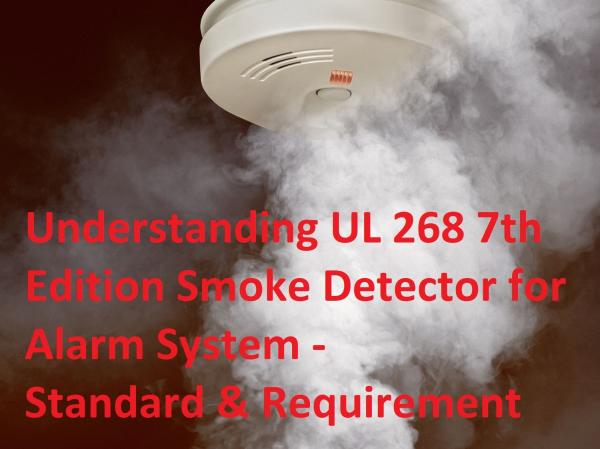Understanding UL 268 7th Edition: The Evolution of Smoke Detectors

Smoke detectors play an essential role in fire safety, alerting us to potential threats and giving us valuable time to evacuate in case of a fire. To ensure the reliability and effectiveness of these life-saving devices, industry standards are continually updated and improved. One such standard is UL 268, which governs the performance of smoke detectors in the United States. In this article we will delve into UL 268 7th edition, exploring its significance, key changes, and the impact it has on fire safety.
Understanding UL 268
UL 268 is the Underwriters Laboratories Standard for Smoke Detectors for Fire Alarm Systems. It is widely recognized and adopted standard in the fire protection industry. It sets the benchmark for the performance and reliability of smoke detectors, ensuring that they can accurately detect the presence of smoke or combustion products.
UL 268 7th Edition: A Brief Overview
The 7th edition of UL 268, published in 2019, marked a significant milestone in the development of smoke detector technology. It introduced several critical updates aimed at enhancing the performance and reliability of these devices. Below, we'll explore some of the key changes in the 7th edition:
- Cooking Nuisance Resistance: One of the most significant changes in the 7th edition is the enhanced resistance to cooking nuisance alarms. Traditional smoke detectors were often triggered by cooking activities, leading to unnecessary false alarms. The 7th edition introduces new test protocols that evaluate a detector's ability to differentiate between cooking aerosols and real smoke, reducing false alarms and increasing overall reliability.
- Expanded Smoke Characterization: The 7th edition introduces a broader range of test fires, including smoldering and flaming fires, to better reflect real-world scenarios. Smoke detectors are now required to respond accurately to a wider spectrum of fire types, ensuring that they can effectively detect all stages of a fire.
- Increased Sensitivity: The 7th edition raises the bar for smoke detector sensitivity. Detectors must now respond more quickly to lower concentrations of smoke, providing faster detection and early warning in case of a fire. This increased sensitivity improves overall safety by giving occupants more time to evacuate.
- Enhanced Testing Methods: The new edition incorporates more sophisticated testing techniques, such as the use of polyurethane (PU) foam as a test material. These methods better simulate real-world conditions and help ensure that smoke detectors can perform reliably in various environments.
- Improved Performance Verification: Smoke detectors must now undergo more rigorous performance verification testing, ensuring that they meet the stringent requirements of the UL268 7th edition.
- Migration to Photoelectric Technology: The 7th edition encourages the use of advanced photoelectric technology, which is known for its ability to detect smoldering fires more effectively than ionization technology. This shift aligns with the industry's efforts to prioritize photoelectric smoke detectors due to their superior performance in real-world fire scenarios.
Impact on Fire Safety
The implementation of UL 268 7th edition has had a profound impact on fire safety:
- Reduced False Alarms: By enhancing cooking nuisance resistance, the 7th edition has significantly reduced false alarms. This improvement not only reduces the burden on fire departments but also encourages homeowners and building occupants to use these alarms.
- Faster Detection: The increased sensitivity of smoke detectors means faster detection of fires, which can be the difference between life and death in an emergency. Early warning allows occupants to evacuate before a fire becomes uncontrollable.
- Better Performance in Real-World Scenarios: The broader range of test fires and improved testing methods ensure that smoke detectors are better equipped to respond to the various types of fires that can occur in homes and buildings.
- Encouragement of Photoelectric Technology: The shift towards photoelectric technology promotes the use of detectors that are more effective at detecting slow-burning, smoldering fires, which are often the most deadly.
UL 268 7th edition represents a significant step forward in the evolution of smoke detectors. By introducing stricter testing protocols, increased sensitivity, and enhanced resistance to false alarms, it improves the reliability and performance of these life-saving devices. As the fire protection industry continues to prioritize safety, UL 268 7th edition plays a crucial role in ensuring that smoke detectors meet the highest standards of performance, ultimately saving lives and protecting property.
For any smoke detector inquiry or development projects, please contact our specialists for more information.

